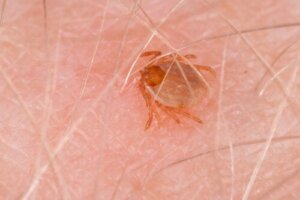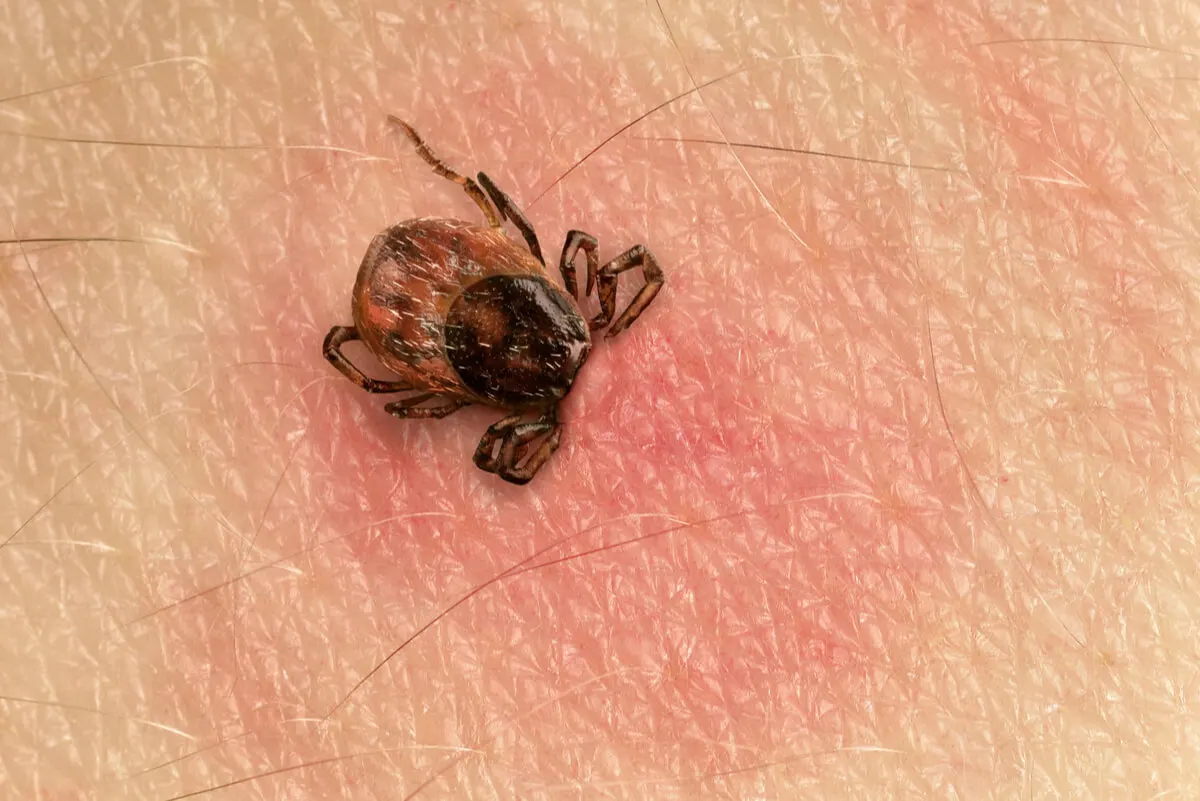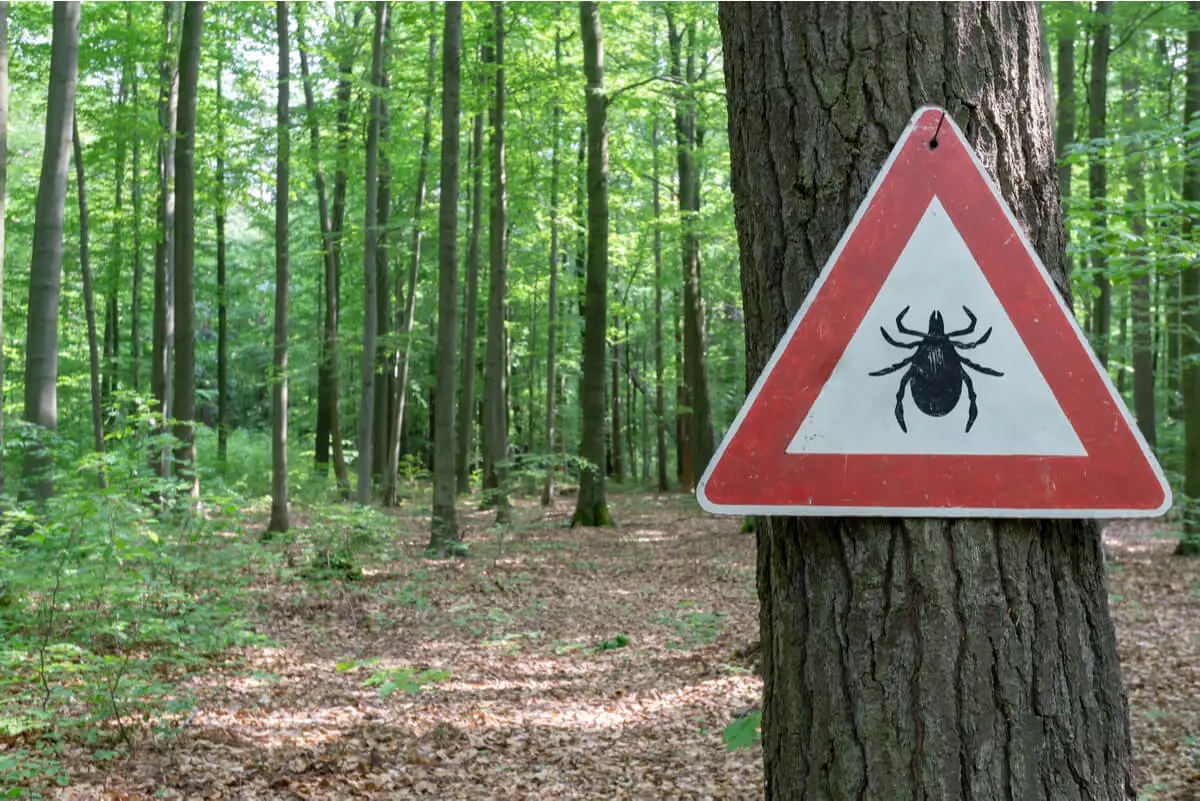Rocky Mountain Spotted Fever: Symptoms and Treatments


Written and verified by the biologist Samuel Antonio Sánchez Amador
Rocky mountain spotted fever (RMSF) is a bacterial disease transmitted by ticks. Rickettsia rickettsii is the causative organism, a gram-negative coccobacillus endemic to Central, North, and South America (especially the northeastern United States).
The number of people affected by R. rickettsii has increased in recent years. In the United States, 495 cases were reported in 2000, while in 2017 this figure rose to 6248 affected. Moreover, as performing reliable serological tests is very difficult, it’s not entirely clear which agent is the causative agent in many of the cases.
The first symptoms of Rocky Mountain spotted fevers are severe headache and high fever, which are accompanied by a rash on wrists and knees. If you want to know everything about this infectious disease, read on.
What is Rocky Mountain spotted fever?
Rocky Mountain Spotted Fever is defined as a bacterial infection of a febrile nature, caused by the bacterium Rickettsia rickettsii and transmitted by various species of ticks (Amblyomma, Dermacentor, and others). Its treatment is simple in the early stages, but if left unaddressed, it has a mortality rate of 80%.
The Centers for Disease Control and Prevention (CDC) reports a series of very interesting data to understand the nature and prevalence of the disease in the United States:
- Rocky Mountain spotted fever (RMSF) is a condition that has been reported nationally in this country since 1920.
- Today, all clinical pictures similar to RMSF fall under the same category: spotted fever rickettsiosis (SFR). As they cannot be distinguished serologically, this includes RMSF, exanthematous rickettsiosis, Rickettsia parkeri rickettsiosis, and Pacific Coast Tick Fever.
- The mortality rate of these rickettsioses is 0.5% of all cases, with Rocky Mountain Fever being the most lethal. In the case of RMSF, approximately 10% of clinical cases are fatal.
- These diseases occur during all months of the year, but seasonality is marked, especially in May-August.
On average, an estimated 500 to 2500 R. rickettsii infections annually, but the ticks that transmit the pathogen are found only 20 % of the time. Fortunately, although the number of cases has increased exponentially, the case fatality rate is lower, due to the use of appropriate medication to treat the disease.

We think you may also enjoy reading this article: Plants that You Can Use as Natural Flea and Tick Repellent
The causes of Rocky Mountain Spotted Fever
To understand the cause of Rocky Mountain Spotted Fever we must dissect the bacteria and the vector. Both are essential for the disease to be transmitted to humans.
About the bacterium
The bacterium Rickettsia rickettsii is a gram-negative parasitic intracellular microorganism. It’s one of the most pathogenic members of the genus Rickettsia and has a marked incidence in the Western Hemisphere.
As the website StatPearls states, once it enters a host, the bacterium invades the interior of endothelial cells, which are the cells that line the inner surface of blood vessels and capillaries. This results in disseminated inflammation, loss of biological function of internal barriers, and dysfunctional vascular permeability throughout the body.
The bacteria can colonize organs such as the brain, skin, and heart via the bloodstream. For all these reasons, the pathogen is considered lethal, especially in elderly and immunocompromised patients.
About the ticks that cause it
Ticks are the vector, i.e. they act as a transport vehicle that allows the bacteria to enter the host’s bloodstream. The main invertebrates that carry this pathogen are Dermacentor variabilis, Dermacentor andersoni, and Rhipicephalus sanguineus.
As indicated by the Mayo Clinic, the tick must remain on the host’s skin for a relatively short period of time to transmit the disease. Unlike other diseases caused by bites, it’s sufficient for it to be attached for a couple of hours, although 6-10 hours is normal.
It’s estimated that 1-3% of ticks in the areas with the highest incidence have this bacteria inside them. Therefore, thisdisease is considered rare, since not every bite results in the manifestation of the clinical picture. Cases increase exponentially in summer when these invertebrates show their peak activity.
The symptoms of Rocky Mountain Spotted Fever
As indicated in the MSD Manuals, symptoms appear 3-12 days after the tick bite. Due to the time interval between the event and the development of clinical signs, many patients do not remember being bitten in the first instance, making the diagnostic process even more difficult.
After a few days, symptoms such as high fever and severe headache appear. Between the first and sixth day of fever, the famous red rashes appear on hands, ankles, feet, and forearms. Petechiae, formed by the extravasation of erythrocytes when a capillary is damaged, are also common.
Impaired cardiovascular permeability and disseminated inflammation result in central nervous system (CNS) symptoms. Severe headache, generalized confusion, and cardiovascular instability are typical signs of this disease.
Possible complications
As indicated by the U.S. National Library of Medicine and other sources, complications are very common if the disease is not addressed in time. Thirty to eighty percent of patients die if left untreated.
Among the most lethal possible effects of the bacteria are the following:
- Brain damage: If the bacteria migrate to the brain, an inflammatory event known as encephalitis can occur. It’s characterized by a headache, fever, fatigue, and, in the worst cases, loss of consciousness with irreparable tissue damage.
- Heart failure: The bacteria invade the endothelium of blood vessels. This can hinder blood flow and lead to clotting problems.
- Endocarditis: If bacteria reach the heart, they can cause inflammation of its tissues.
Diagnosis and treatment
As mentioned above, it’s virtually impossible to distinguish between different rickettsial infections. For this purpose, blood tests are usually performed on the patient, but these can take several weeks. If the practitioner suspects Rocky Mountain Spotted Fever, antibiotic treatment is started immediately.
This early approach has reduced the mortality rate from 20% to 5% in recent years, so at the first sign of symptoms, it’s essential to see a doctor immediately. The treatment drug of choice is always doxycycline.
The substance is administered orally if the infection is mild, but intravenously if the symptoms are severe. The fever usually disappears in the first 3 days after the start of treatment, although the drug should be taken for 7 days, without exception.
Antibiotics are not usually prescribed for people who have been bitten by a tick, but who do not have symptoms. However, it never hurts to report a bite to health professionals.

Prevention of Rocky Mountain Spotted Fever
This disease is considered rare, as only a maximum of 3% of ticks have this bacteria inside them. However, certain preventive measures can always be taken when going out in the field, such as wearing long clothing, self-examining the body after a walk, or using insect repellents.
It’s also a good idea to deworm household pets and disinfect any surface where a dog lives from time to time. Remember that Rhipicephalus sanguineus can transmit the disease and this is the typical tick of domestic canines.
Like this article? You may also like to read: The Relationship Between Body Temperature and Fever
A rare disease that can be cured
Rocky Mountain spotted fever is not contagious and, therefore, the patient does not require social isolation. If detected and treated in time, the prognosis is very positive, since practically all cases resolve themselves within 7 days after the administration of doxycycline.
Diseases such as this one highlight the need for self-care and vigilance when interacting with pets or on walks and outdoor activities. It’s always a good idea to go with a companion and examine each other for ticks at the end of the day.
All cited sources were thoroughly reviewed by our team to ensure their quality, reliability, currency, and validity. The bibliography of this article was considered reliable and of academic or scientific accuracy.
- Rocky mountain spotted fever, epidemiology and statistics. Recogido a 5 de abril en https://www.cdc.gov/rmsf/stats/index.html
- Snowden, J., & Simonsen, K. A. (2020). Rickettsia Rickettsiae (Rocky Mountain Spotted Fever). StatPearls [Internet].
- Rocky mountain Spotted fever, mayoclinic. Recogido a 5 de abril en https://www.mayoclinic.org/diseases-conditions/rocky-mountain-spotted-fever/symptoms-causes/syc-20361032
- Fiebre maculosa de las montañas rocosas, MSDmanuals. Recogido a 5 de abril en https://www.msdmanuals.com/es-es/hogar/infecciones/infecciones-por-rickettsias-e-infecciones-relacionadas/fiebre-maculosa-de-las-monta%C3%B1as-rocosas
- Fiebre maculosa de las montañas rocosas, medlineplus.gov. Recogido a 5 de abril en https://medlineplus.gov/spanish/ency/article/000654.htm
This text is provided for informational purposes only and does not replace consultation with a professional. If in doubt, consult your specialist.








